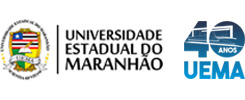Use este identificador para citar ou linkar para este item:
https://repositorio.uema.br/jspui/handle/123456789/482| Título: | Percepção de serviços ambientais e estoque de carbono no solo em áreas de assentamento rural na Amazônia Oriental, Brasil |
| Título(s) alternativo(s): | Perception of environmental services and soil carbon stocks in rural settlement areas in Eastern Amazon, Brazil |
| Autor(es): | Santos, Ceália Cristine dos |
| Orientador: | Ferraz Junior, Altamiro Souza de Lima |
| Membro da Banca: | Zonta, João Batista |
| Membro da Banca: | Ottari, Ana Maria Aquino dos Anjos |
| Membro da Banca: | Braun, Helder |
| Membro da Banca: | Desjardins, Thierry |
| Data do documento: | 2017-03-09 |
| Editor: | UEMA |
| Resumo: | A compreensão dos serviços ambientais por agricultores é essencial para construir um novo direcionamento na gestão dos ecossistemas naturais. Diante do pressuposto que os agricultores valorizam os serviços ambientais, o registro da percepção destes sobre os serviços auxilia a adoção de práticas, manejos e políticas voltados para o uso sustentável das terras. Neste contexto, este trabalho tem por objetivo avaliar a percepção dos agricultores sobre os serviços ambientais, aspectos socioeconômicos e mudanças do uso e ocupação do solo no Projeto de Assentamento Diamante Negro Jutaí, no município de Monção, Amazônia Oriental - Brasil, área integrante da Política Nacional de Reforma Agrária. A abordagem metodológica integrada constituiu-se da aplicação de questionários aos agricultores para análise socioeconômica e percepção dos serviços ecossistêmicos e do geoprocessamento para avaliar as mudanças no uso e ocupação do solo. Os agricultores são adultos e idosos experientes, que em sua maior parte tiveram acesso ao ensino fundamental, participativos nas organizações sociais, reconhecem a pesca como mais importante serviço ecossistêmico e também o mais ameaçado. Consideram que seu bem-estar está diretamente vinculado à segurança e à solidariedade, isso indica unidade da comunidade rural. A redução dos corpos hídricos, da pesca e da produção de alimentos comprometem a subsistência adequada e o acesso a bens além de outros componentes do bem-estar. São necessárias políticas e práticas de conservação dos recursos hídricos e de inserção de um modelo de produção sustentável. |
| Resumo: | The present paper had the goal to evaluate the effects of the use soil systems about environmental services. In this perspective, we analyze farmers’ perceptions about environmental services (ES), socioeconomic aspects, the changes in using and land occupation, and to evaluate the carbon stock and fertility in use soil systems, in Jutaí Diamante Negro settlement project, Monção city, eastern Amazon, Brazil. Integrated geoprocessing methods were used to the socioeconomic and environmental analysis, and application of questionnaires. There were adults and elderly farmers, experienced in cutting and burning crops and ebbing, about half of them started elementary education and most are participative members of local social organizations determining aspects in their positions and/or opinions, in farmers’ perception, fishing is the most important environmental service (ES) and also is the most threatened. The spatial dynamics of the studied period, it highlights the reduction of water bodies. The farmers’ well-being is directly linked to security and solidarity. Reducing fishing and food production compromise adequate subsistence and access to goods, besides other components of well-being. In order to evaluate concentration and carbon C stock in use soil systems: itinerant agriculture (IA), pasture (P) mixed capoeira (MC) and secondary forest (SF) with four replicated of each system, and it was established a sample scheme, in an area of 2500 m2 composed for nine points, a central profile (1.2 x 1.0 x 1.2m) where were collected samples in layers of 10 to 10 cm until 1,0m depth and eight miniprofiles (0.7 x 0.7 x 0.7m) in which were collected samples in five soil layers 0-10, 10-20, 20- 30, 30-40 and 40-50 cm depth, totaling 50 samples per plot. The effect of the systems of using on the concentration and carbon C stock was checked by analysis of the single variance factor and then by the Tukey (p < 0,05). And software Statistic 8 was used. It was also collected 10- 20cm to analyze fertility of the research areas. The C concentration recorded in the depth of 0.10cm was 9,54g kg-1 on the pasture and 12,73g kg-1 on mixed capoeira. The carbon C stock recorded in the less disturbed system was: 15,67 Mg kg-1 in mixed capoeira and 12,72 Mg kg-1 in the secondary forest. In the depth of 0-30 cm is found 50% of the soil carbon stock in relation to the 0-100 cm profile. These results suggest that the system of cutting and burning to implantation of crops or pasture is directed to reduce the carbon stock in the soil, which increases the susceptibility to degradation. The systems of using evaluated did not have any effect on the concentration and carbon stock, and the fertility attributes, these presented low values that suggest the necessity to adopt. Appropriate soil management practices. |
| Palavras-chave: | Armazenamento de carbono Uso da terra Desenvolvimento sustentável Amazônia Oriental - assentamentos rurais Estudo de percepção Percepção de serviços ambientais Estoque de carbono Serviços ambientais - percepção de agricultores Agricultores - percepção de serviços ambientais Projeto de Assentamento Diamante Negro Jutaí - Monção - MA Monção - MA Serviços ambientais dos solos Assentamento rural - Monção-MA Carbon storage Land use Sustainable development Eastern Amazon - rural settlements Perception study Perception of environmental services Carbon stock Environmental services - farmers' perception Farmers - perception of environmental services Diamante Negro Jutaí Settlement Project - Monção - MA Soil environmental services - Maranhão - Brazil |
| Aparece nas coleções: | Doutorado em Agroecologia CCA - Teses |
Arquivos associados a este item:
| Arquivo | Descrição | Tamanho | Formato | |
|---|---|---|---|---|
| TESE - CEÁLIA CRISTINE DOS SANTOS - PPGA CCA UEMA 2017.pdf | PDF A | 799.62 kB | Adobe PDF | Visualizar/Abrir |
Os itens no repositório estão protegidos por copyright, com todos os direitos reservados, salvo quando é indicado o contrário.
